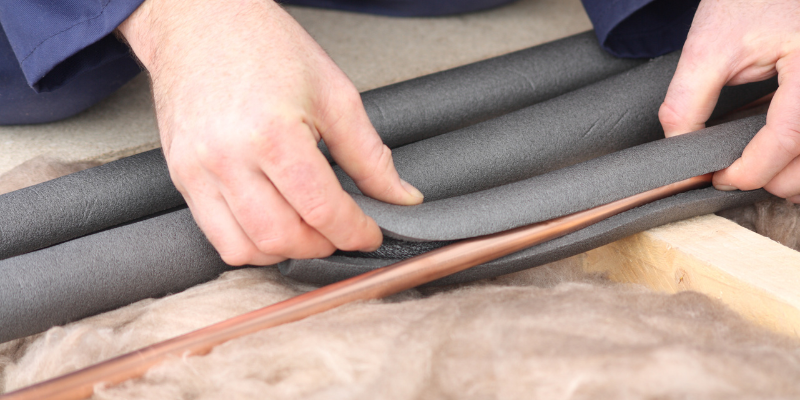
A cozy scarf, a fire in the fireplace, and a hot cup of cocoa may help keep you warm when the temperature outside drops down, but most of those familiar comforts won’t keep your pipes warm. If you check off the list below, the pipes in and out of your home will be less likely to get frostbite when the temperatures dip.
Remember that once a pipe freezes, it can burst, which may lead to flooding or other damage to your home or business.
Inside
- Open the cabinets in your kitchen and bathrooms to allow warm air to circulate around the water pipes.
- Set your thermostat higher than 55 degrees, especially when you are gone for the day or away for a long time.
Outside
- Protect faucets, outdoor pipes, and pipes in unheated areas with pipe insulation. If insulation is not an option, consider wrapping them with rags, newspapers, trash bags, plastic foam, or bubble wrap.
- Cover vents around your home’s foundation so drafts can’t sneak in.
- Drain water hoses and store them in a garage or shed.
- Drain irrigation water supply lines.
- Know where your main water shut-off valve is. Most homes have a master valve or a main water shut-off that allows you to turn off the water in an emergency.
- If you suspect you have a leak, turn the water off at that main shut-off valve. If you drain your pipes, you must turn off the power to your water heater if it is electric or, if it runs on gas, turn off the gas supply line to the water heater.
If your pipes do freeze, don’t fret. Here’s what to do:
If you turn on a faucet and only a trickle comes out, your pipes are likely frozen. This typically happens to pipes along exterior walls or where your water service line enters your home.
If this occurs, please contact a professional plumber who may be able to thaw the pipes with warm air.

